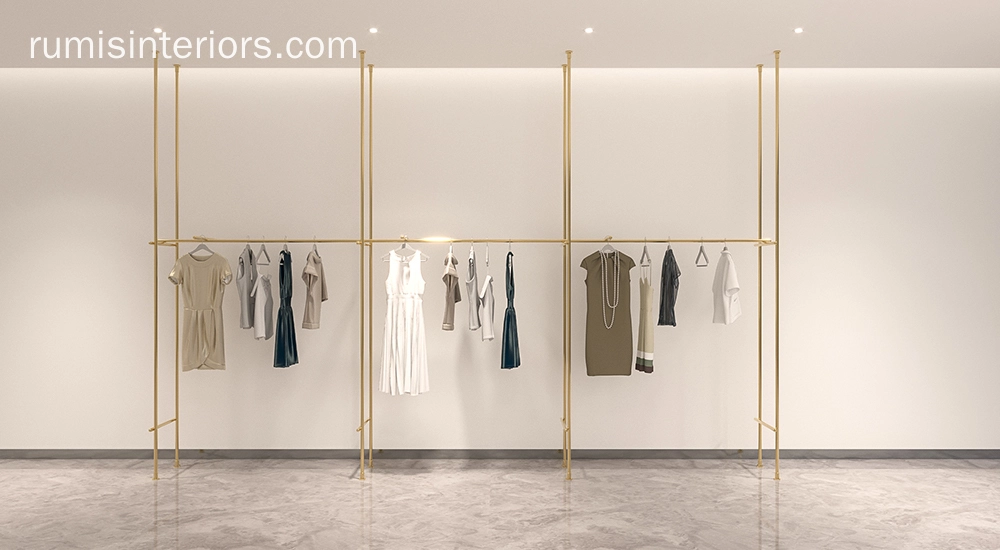Introduction
In the case of retail, a lot depends on how a piece of clothing is presented to the customer. The display is not just an aesthetic one; it is a haptic one that makes the customers feel like they want to touch the product. The proper display can go a long way in the beautification of your boutique, increase sales, and be memorable.
Clothing displays are an important aspect of retail stores that can transform a plain store into an attractive store. If you are presenting a new line of clothing or seasonal clothing, your display should grab the customer’s attention while at the same time informing them of how they can incorporate the item into their daily lives.
Why Displaying Clothing Properly is Important
This shows that the way clothes are arranged affects the customers. Organization and neatness of the display allow the consumer to easily locate the items they are interested in and to easily imagine themselves wearing the clothes. Research has proven that good visual merchandising can enhance the chances of a purchase by a very large percentage.
Perhaps the greatest benefit of proper clothing displays is the ability to appeal to the customers’ emotions. People tend to interact with signage that is well conceived and integrated. This makes them spend more time in the store, hence the possibility of making a sale.
How to Display Clothing in a Boutique?
Use Mannequins
Dolls are the best tools to illustrate what clothes look like when being worn. They allow the potential buyers to understand how the clothes look like and what the piece will look like in real life. It is also important to vary the type of mannequins that are used in the store: full body, torso or hanging mannequins.
Focus on Placement
The location of your clothes is also very important in as much as it determines the extent of visibility of your clothes. Products on eye level are more likely to be noticed. Items should be frequently changed and should always be well-arranged on the shelves. This will make your store look new and welcoming even to those customers who have been there before.
Common Mistakes in Clothing Displays and How to Avoid Them
Overcrowding the Display: Overcrowding is one of the most frequent mistakes when it comes to clothing displays. Often, when there are too many items, customers are confused and unable to give their attention to the products that are most important. Avoid cluttering your displays, and make sure that you have only a few pieces on the display, and they should complement each other.
Poor Lighting: Proper lighting is as important as anything else when it comes to making your clothes stand out. Sometimes, when the lights are low or extremely bright, the best fabrics can appear unattractive. It is desirable to avoid direct lighting that creates reflections on the products’ surface and causes glaring or shadows.
The Role of Color and Theme in Clothing Displays
Color Coordination: Huge importance is given to the color as it helps to attract customers’ attention. It is always more effective to arrange the items in pairs of complementary colors or use a single color on the products. Moreover, the use of color can elicit a response; for instance, warm colors such as red and yellow bring about enthusiasm, while cool colors such as blue and green are likely to inspire tranquillity.
Seasonal and Themed Displays: It is possible to have the units of merchandise arranged based on season, holidays, or promotions that the store has. For example, the sales of swimwear during summer or winter coats during the holiday season make a good story that will compel customers to buy the items.
Creating a Story with Clothing Displays
A display should always communicate a message and vision. For example, instead of piling up clothes on a rack, why not display how some people live or the kind of life they lead? For instance, if you are showing holiday wear, then you should arrange accessories such as sunglasses, hats, and beach towels in a tropical manner.
This is because the moment customers can picture themselves wearing the outfit to the occasion, such as a casual coffee date or a beach holiday, then they are more likely to bond with the clothing. It also creates a better feeling towards the product and thus creates better chances of selling the product.
Conclusion
Displaying clothing is an art that goes beyond just hanging garments on a rack. With the right techniques, you can create an atmosphere that not only highlights your clothing but also creates a memorable shopping experience for your customers. By focusing on proper lighting, placement, color coordination, and thematic storytelling, you’ll set your store apart from the competition.
FAQs
A: Clothes should be displayed on a hanger with the garment facing forward and the hanger positioned so the item is clearly visible. Avoid overstuffing the rack; give each piece enough space to shine.
Q: How often should I change my clothing displays?
A: You should refresh your displays at least once every two weeks, or sooner if the items are seasonal or have been on the floor for a while. Regularly changing displays keeps the store looking fresh and engaging for returning customers.
Q: How can I make my displays more interactive?
A: Incorporate elements like touchable fabrics, personalized signage, or even a small seating area where customers can try on items. Adding these interactive components encourages customers to engage with your displays longer.


























Facebook
LinkedIn
Instagram